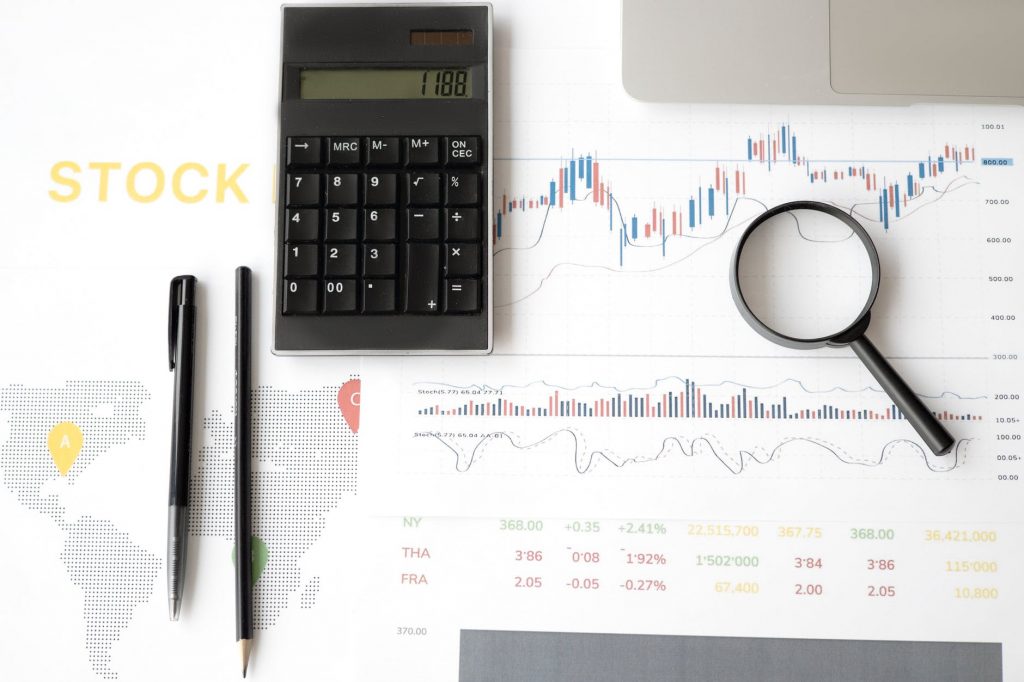Trading Strategies
Trading strategies take advantage of price movements to generate a profit. To be successful, you will need to use powerful trading systems that are based on sound technical analysis, suits the instrument you wish to trade and generates more wins than losses. This page will break down the key concepts and requirements for a good trading strategy before outlining some examples and providing tips for specific assets and risk management.
Top 3 Brokers Suited To Strategy Based Trading
Trading Strategies For Beginners
The Basics
Trading requires a strong foundation of basics to build a successful enterprise. Many make the mistake of presuming that a complicated trading strategy means effective trades and big profits, but this is often not the case. No trader, whatever their level, will succeed without a firm grasp of the basics. Without mastering the following tips, your trading days will end before they’ve begun.

- Choose funds carefully – You should take time to consider how much capital you are willing to risk before you fund your account. Successful traders rarely risk more than 2% of their funds on a single position, with most sitting at 1%. Set aside funds based around this rule of thumb, even if your trading strategy seems very effective, and be prepared for losses, even the best hit hard times.
- Start small – Not only in terms of capital but also in scope. It is much easier to focus on and gain an understanding of just a few stocks while you are getting your bearings, rather than attempting to simultaneously track 20 trading chances. To begin with, choose two or three stocks that suit your day trading strategy, for example, and hold out until you’re comfortable.
- Educate yourself – The importance of a good understanding of the trading strategies and stocks you are using is obvious, but traders also need to stay informed of the entire sector. Follow any market news and economic releases that are relevant, like earnings announcements or economic outlook reports.
- Timing – Beyond simply timing your trades well within your trading strategy, be wary of the time of day. Opening and closing times often bring with them volatility that is harder to read without experience and can cause big losses for beginners. Start by holding off for 20 minutes or so until you are ready.
- Practice – Most brokers will offer demo accounts, which can be great tools for getting to grips with the basics of trading and specific platforms. Their usefulness extends well beyond this, providing an opportunity to practice new trading strategies or refine existing ones without financial risk.
- Take it seriously – You will be unlikely to secure meaningful profits by slipping an hour a day around your work. You will likely need most of the hours of a working day to track, identify and move on market opportunities quickly enough.
- Distance yourself – Given the risks associated with day trading, it is vital you don’t let emotions compromise your strategy. Pick your investing strategy, plan your trades and stick to them; never let greed or fear stop you from pulling out of a failing trade.
Key Concepts
Choosing an asset is as important as choosing a trading strategy, with significant implications if it is done wrong. Three key concepts will affect the number of available opportunities, their profit potential and their risk of loss. No trader can succeed without a solid understanding of volatility, liquidity and volume.
- Volatility – A double-edged sword, but a profitable one. Greater volatility is characterised by larger price ranges across a time frame and manifests itself in larger price movements. These will give you greater profits on successful trades but heavier losses on failed ones.
- Liquidity – Facilitates the biggest profits by allowing you to enter and exit stocks at good prices. High liquidity often means lower spreads, so less money is siphoned off to the markets, and low slippage, so the presented price is the one your order is matched at.
- Volume – An important consideration for all traders and trading strategies. Volume tells you how much an asset is traded, often given in the form of an average daily trading volume. Volume generally indicates interest in a stock or currency pair, for example.

6 Popular Trading Strategies
1. Breakout
The breakout day trading strategy involves analysing special levels that the price repeatedly bounces between, forming a channel bounded by a support level at the bottom and a resistance level at the top. When the price breaks out of this channel, volatility tends to increase, and the price will likely continue in the new direction for a time.
Breakouts are often the start point of large price swings and major trends, providing big profit opportunity. The more times the support and resistance levels have been hit but not breached, the more validated they are and the more likely a breakout will continue next time they are breached.
Choosing the right asset is important with this trading strategy; try to look back at the instrument’s history to see if channels are often formed and breakouts tend to be successful.
Entering a breakout trade is simple, once the channel is breached the trader should open a position on the asset. If the price closes above the resistance level, a long position should be opened. Likewise, if the price closes below a support level, a trader should short the asset.
Exit Planning
With breakout trading strategies, both entry and exit points should be carefully planned. A useful guide for predictions is the asset’s recent data, particularly channel width or average price swing size. That is, if recent channels have been eight price points wide, you should plan to take profits seven or eight points above the old resistance level, or below the old support.
Once a bullish breakout occurs, the old resistance level often becomes the new support level and vice versa for bearish breakouts. However, breakouts can fail, and the easiest way to tell is if the price closes within the old channel after initiating a breakout.
Unfortunately, it is not as simple as setting a stop at the old level to avoid losses from a failed breakout. This is because a breakout will often test the old resistance level, so setting a stop directly there would likely result in an early exit and a loss of profits. You may be more likely to win a trade by setting a stop more comfortably within the old channel, though this would result in more losses in case of a failed breakout.
Note, such day trading strategies require careful technical analysis.
2. Scalping
Scalping is one of the less simple day trading strategies that involves profiting from tiny price changes using massive volumes. Scalpers typically buy and sell instruments extremely quickly, usually as soon as a trade becomes profitable.
Scalping is the exact opposite of the philosophy ‘time in the market beats timing in the market’. Instead, a strict exit strategy is used to limit losses and sell over very short time frames.
Scalping options can be an exciting way to day trade, though it is one of the riskier day trading strategies that work, requiring high levels of focus, stamina and discipline.
Scalpers profit most from highly volatile and liquid assets, as spreads and slippage would easily negate the small gains per share they obtain.
3. Momentum
Momentum trading is a popular investing strategy, especially among beginner traders, as it has a simple premise. Momentum trading involves jumping on the bandwagon as popularity rises for an instrument, causing a large uptrend, and then selling at its peak. Traders can assess the recent volatility and trade volume of an asset that is rising to determine when its momentum is slowing.
A common approach to determine big uptrends is by following the news and company reports, using them to spot trends and open a position while momentum is high. Many tools are also available to help with the momentum day trading strategy, including 2-day RSIs and moving average convergence-divergence (MACD).
The flipside of the momentum coin is called fading the price drop, which involves shorting an instrument as its uptrend begins to lose momentum. The position is then closed after the pullback when its price drops back down.
4. News Trading
One popular trading strategy that doesn’t use technical analysis is investing on news. This fundamental strategy can be used for both intraday trading and longer-term investing. The premise is simple, prices and markets will move in response to major news announcements.

The FSTE, for example, is made up of a number of banks and financial organisations. As a result, if you anticipate an announcement from the EU asserting control over liquidity in the wake of Brexit, you may be able to predict in which direction the value of British banking stocks will trend.
5. Reversal
Most trading strategies fear reversals, as they will fail their trend and eat away at their profits. However, some traders use them to their advantage, predicting reversals and planning their trades around them. Reversal trading is sometimes called mean reversion.
Predicting reversals is infamously difficult, otherwise, most regular trend traders wouldn’t get caught out. The time of the reversal isn’t all that needs to be accurately forecast, as the strength of it will play a big part in the profitability of a trade. One method for reversal prediction is known as the sushi roll technique, developed by Mark Fisher. There are also tools like Bollinger Bands, which can be combined with MACD, to identify reversals.
Reversal trading is very complex, requiring in-depth market knowledge and lots of experience. As such, it is a difficult and risky trading strategy for beginners.
6. Daily Pivot Points
This day trading strategy is the longest-term of the intraday trading strategies, focusing on the day’s net volatility. The premise is to identify the day’s lowest price and open a long position. Once the asset reaches the day’s highest point, the position is closed, and the full day’s volatility has been utilised. The difficulty comes in identifying these highs and lows.
Pivot points are a useful tool in this strategy, providing an indication of the day’s general price direction and helping identify the highs and lows. Pivot points are also useful for several other strategies, including breakout and trend trading.
Limit Your Losses
Losses are expected; no trading strategy is 100% effective, else everyone would use it and the markets would fail. The key to profitable trading is winning more trades than you lose and ensuring that your wins are bigger than your losses.
Limiting losses are especially important for margin day traders, whose strategies leverage brokers to access more markets and larger positions. While this provides greater profit potential, the risk and size of losses are more significant.
Stop Losses
Stop losses are market orders that automatically close open positions at a predetermined point. These stop unnecessary losses and control the levels of risk exposure for each trade.
For a long position, traders may place a stop-loss below a recent low, stopping a reverse breakout from causing significant losses. For short positions, the stop-loss may be placed above a recent high. Alternatively, some day trading strategies on the NSE, for example, place stop-losses based on volatility levels.
A common approach is to place two different stop-losses. The first is a physical stop-loss at a predetermined level, dictated by the trading strategy being followed. The second stop-loss is mental, placed at a point that means the entry criteria have been violated by an unexpected price turn.
Forex Trading Strategies
Forex trading tends to be riskier and shorter-term, riding the higher levels of volatility that come with currency trading. With the massive range of major, minor and exotic pairs that exist, there are pairs for traders of all risk appetites and no big capital requirements. All the trading strategies above can be applied to forex markets.
Cryptocurrency Trading Strategies
Cryptocurrencies have been rapidly gaining popularity and fame since their inception in 2009. Fortunately, anyone can profit from crypto markets, even if you have no understanding of blockchain, the complex technology behind cryptos like Bitcoin, and no hope for their viability in the long term. Use the above trading strategies to try and profit from its market movements.
Stock Trading Strategies
Stock markets are extremely popular and see massive trade volumes from individual investors and huge firms alike. There are a lot more strategies that are specifically useful for stock day trading, such as the moving average crossover, which looks at the changes in different moving averages to generate entry and exit points throughout the day.
Index Strategies
Indices are a basket of securities, like stocks or commodities, that are grouped and speculated upon. Some famous indices include the FTSE 100 or the S&P 500, which measure the performance of the UK’s top 100 companies and the US’ top 500, respectively. Indices are often quite stable and tend to steadily rise in the long term. While typically the domain of longer-term traders, a shorter term day trading strategy can be suitable for indices too.
Spread Betting Strategies
Spread betting involves speculating on many global markets without owning any assets. Spread betting in the UK offers fewer fees, commissions, taxes and rules, all of which can be leveraged using straightforward trading strategies. A spread betting strategy can used on most major financial markets, from stocks and forex to cryptos.
CFD Trading Strategies
CFDs are a popular and very simple instrument. Traders essentially bet on the direction of price movement over a given timeframe, exchanging the price difference at the end with the broker. Its simple concept and lack of need to own any assets are attractive to some. Again, CFD trading is available on most large financial markets.
Risk Management
Stop Loss
Trading without risk is impossible, especially if you are hoping for big profits. While all trading strategies have an inherent level of risk, care must be taken to manage the risk and control losses wherever possible. Failure to take risk seriously and take the necessary steps will quickly end a trading career.

The best and easiest risk management tool is a stop-loss. Used in case the instrument price trend reverses, moving in the opposite direction than required, a stop-loss will control the risk and prevent significant losses.
Position Size
Position size is another important consideration of trading strategies because if you combine well-placed stop-losses with an easy calculation, you can never lose more than an expected, manageable portion of your capital if you trading strategy fails.
A common technique applied by many successful traders is the 1% method, so named as no more than 1% of your funds can be lost in any one trade. Your stop-loss position should be dictated by the trading strategy you are using and, once this has been selected, the position size can be calculated.
- Find the difference between the entry price (E) and stop-loss price (L) to find the risk per share (r) r=E-L
- Divide 1% of your capital (C) by the risk per share to find the maximum position size (S) S= (C×1⁄100)/r=(C×1⁄100)/(E-L)
A common point of confusion is the relationship between this calculation and leverage when margin trading. Your position size will be unchanged whatever happens, the leverage is selected after this calculation to allow you to open the position if it is bigger than the amount of capital in your account.
To ensure that each win is as big as possible, check that there is sufficient volume in the market at the time to accept your position size. If the position is too big and there is not enough volume, slippage will occur.
Automated Trading Strategies
Though technically not a trading strategy itself, automated trading is widely used by investors. Automation brings about several advantages, including faster reactions, strict protocols and a lack of emotion. On top of this, once written, bots are so easy anyone can use them. Automated trading bots can either be found online or written yourself; many brokers now offer APIs and scripting tools to implement your own trading bots.

Copy Trading Strategies
Copy trading services have grown in popularity in recent years. These straightforward tools allow beginners to mirror the positions and strategies of successful traders in their own account. Copy trading is available on forex, stocks, cryptos and more. Both free and and paid-for solutions are available. Most top brokers also list the best the best copy trading providers so finding a master trader who suits your style and objectives is easy.
Learning Materials
Videos
Videos are an engaging learning tool, using a combination of audio and visual explanations to help break down trading strategies and tools. Many brokers now offer their own selection of helpful videos that are usually found both on their website and YouTube.
Blogs
Some people like to learn from the experiences of others, which is where blogs shine. There are a huge number of blogs out there, both from small investors and famous, experienced traders. Blogs are usually free, often providing nuggets of gold or clever tweaks on common trading strategies.
Forums
Forums, much like blogs, are used by many traders to share their experiences and knowledge. However, forums are much more of a discussion, allowing readers to ask and answer questions. While useful, forums often have limited space and so compromise either on the complexity of the strategy or the detail of the explanation.
PDFs
Great for detailed lists like the ’20 best day trading strategies for UK commodities’, PDFs are often easy to follow and find, with many appearing from a quick Google search. Their biggest selling point, though, is their range, you can find beginner and advanced PDFs, extreme strategy PDFs, solutions for different systems & methods, for using price action patterns, and many more. Downloading a PDF is usually free and helpful for following along with your own candlestick charts and indicators.
Books
Books can pick up the slack of PDFs, blogs and forums, marrying accessibility and range with incredible detail and well-written explanations. If you don’t want something physical, most books come with an ebooks as alternatives. Books vary from general concepts and trading philosophies to specific, detailed information on developing a trading strategy for crude oil or leveraged ETFs, for example.
Online Courses
For those who prefer structured learning with helpful graphics and animations, online training courses may be for you. Many websites now offer courses on day trading strategies, instruments and tools. While some are free, some can cost a lot of money to join. However, it should be noted that some brokers have begun to offer their own training courses to clients. Courses can be found on almost any strategies, from moving average crossover strategies to momentum reversion strategies.

Final Word On Trading Strategies
There are many types of trading strategies out there, and this article has provided some of the most popular and easiest to get started with. There is also a wealth of information online to find new strategies, give helpful advice and help with money management. While many claim the title, there is no single best strategy; each is suited to different traders, assets and markets.
FAQ
Can You Start Day Trading For A Living?
It is possible to making a living using day trading strategies. There is a long list of examples with manual and automated systems available online. A wealth of tips and strategies are available via videos and PDFs, from index day trading to longer-term gold investing setups.
Are All Day Trading Strategies Quantitative?
No, there are many different focuses for trading strategies, and lots will rely on graphics-based tools. For example, a strategy may use crossovers of three different simple moving averages up to 20-days to inform their trades. Many day trading strategies are informed by world events, news and economic releases.
What Instruments Can be Used For Day Trading?
Day trading can be used on any financial instrument that is traded inside a day. This includes stocks, futures, cryptocurrencies and ETFs, to name but a few. Every instrument type has different characteristics, however, with some more suited to day trading than others.
What Is The Best Trading Strategy?
Despite PDFs and websites that claim to have revealed the best trading strategies, there is no such thing. All strategies have different pros and cons and suit different traders. The viability and profitability of a strategy can depend on available technology, risk appetite, base capital, coding knowledge and the markets available.
What Other Trading Strategies Are There?
There are limitless trading strategies out there. Beyond the five outlined above, there are strategies focused on hedging and price gaps. A simple day trading strategy using Bollinger Bands and MACD, for example, will work for well some while others may use complex statistical algorithms based on data from seven days ago. Strategies can be combined and refined to your heart’s content.

